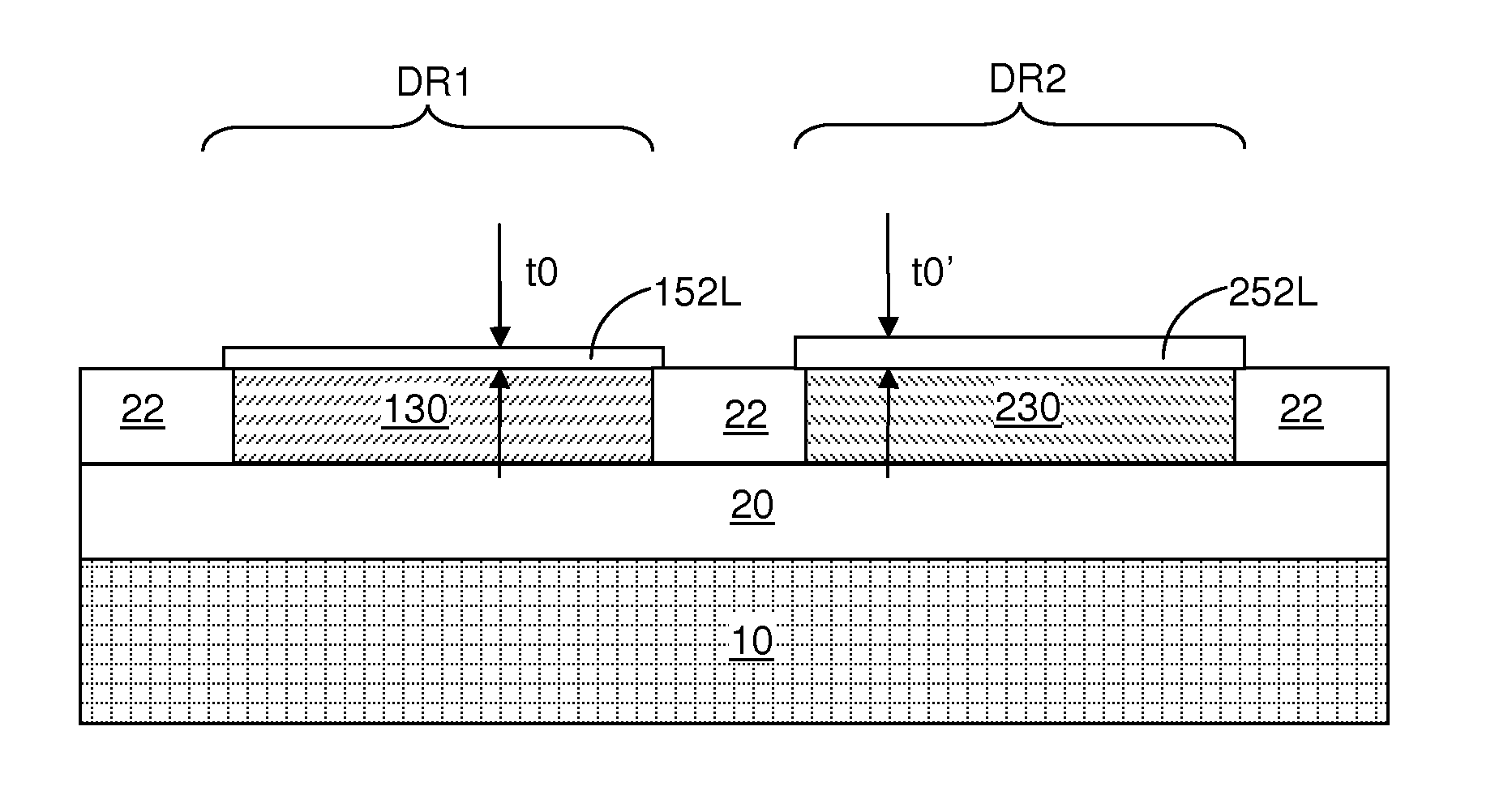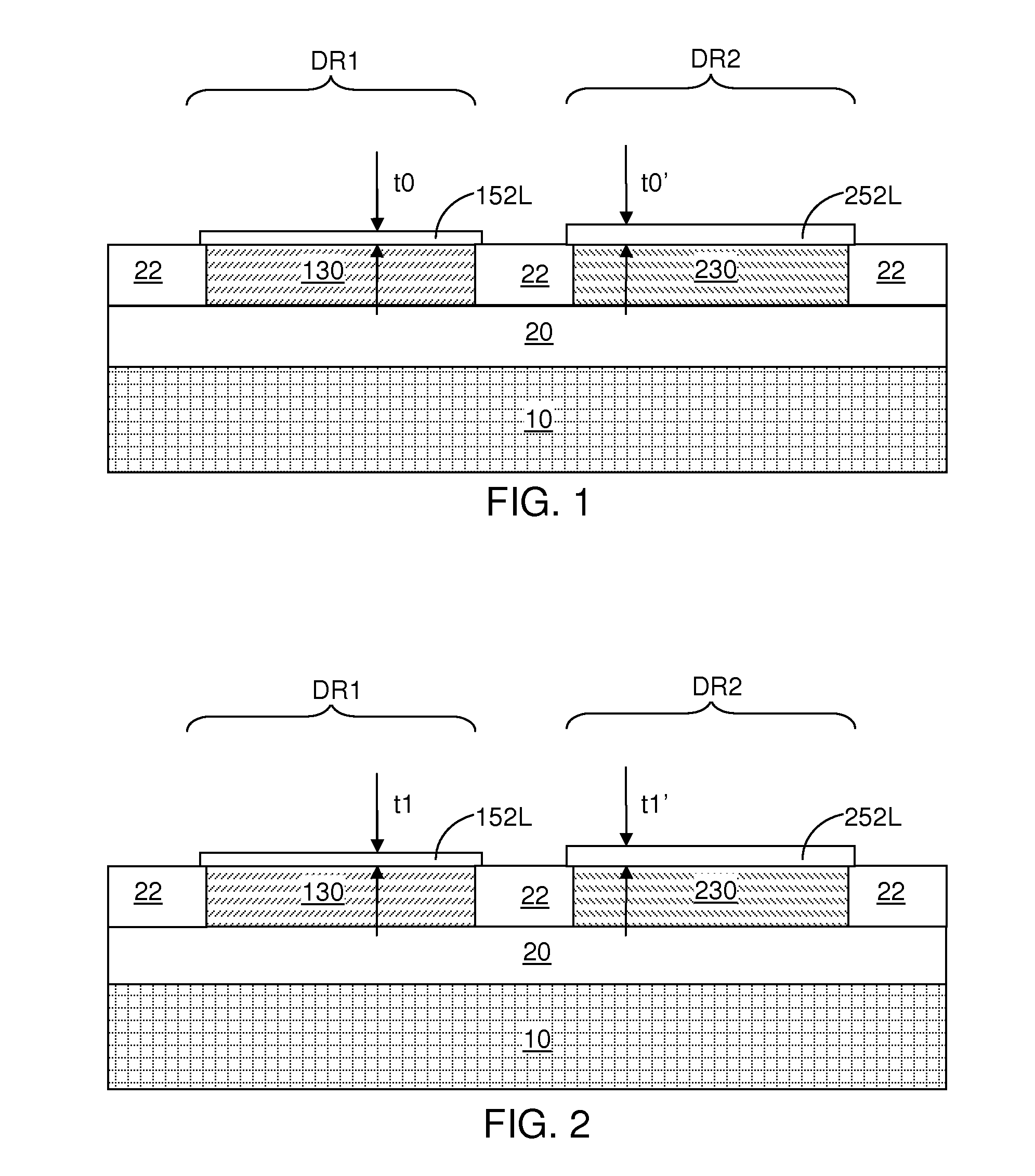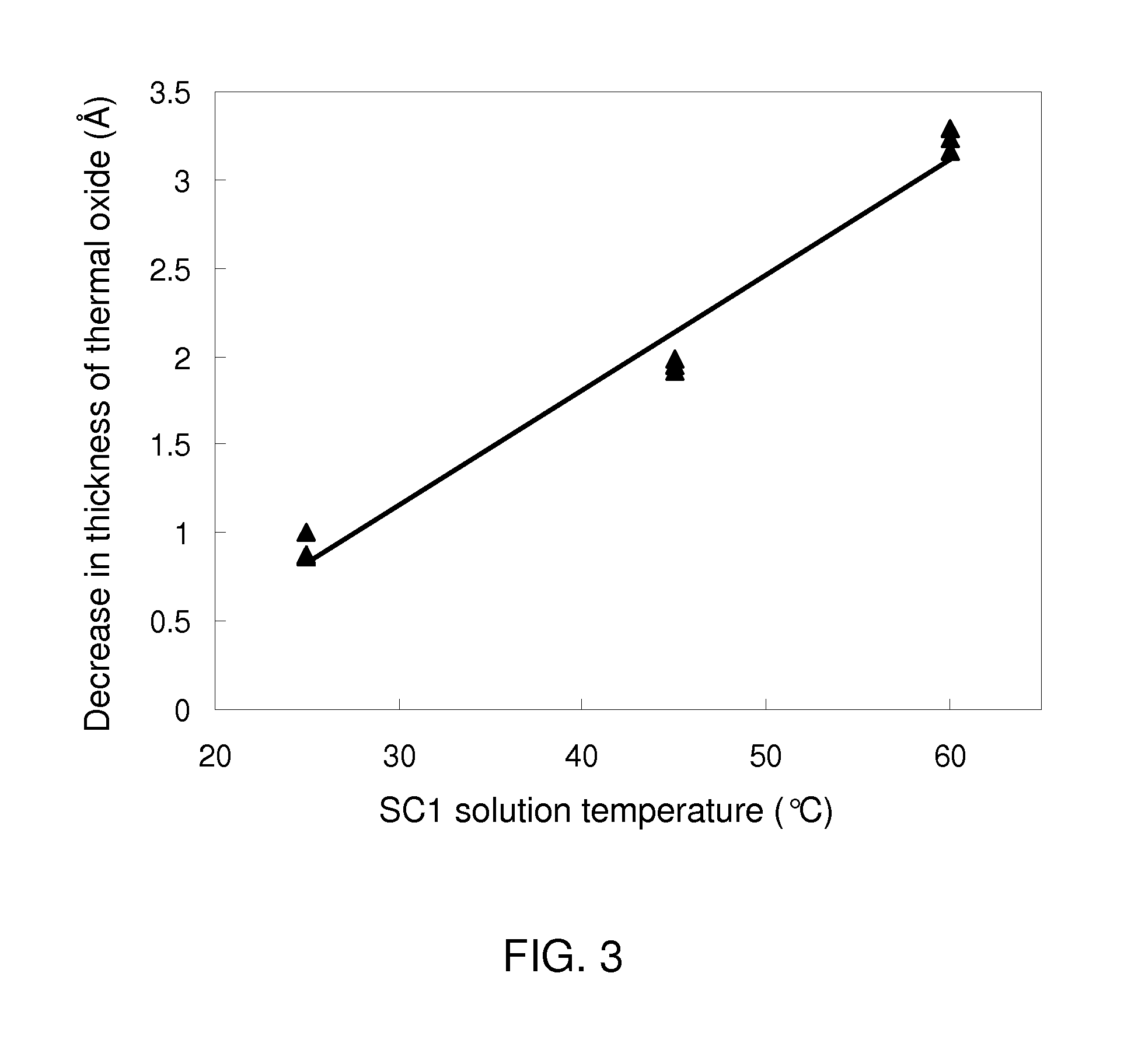Hydroxyl group termination for nucleation of a dielectric metallic oxide
a technology of metallic oxide and hydroxyl group, which is applied in the direction of coating, semiconductor devices, chemical vapor deposition coating, etc., can solve the problems of poor quality differences that are not desirable, and achieve the effect of reducing interfacial defects, facilitating nucleation and deposition of dielectric metal oxides, and reducing differential total thickness
- Summary
- Abstract
- Description
- Claims
- Application Information
AI Technical Summary
Benefits of technology
Problems solved by technology
Method used
Image
Examples
Embodiment Construction
[0017]As stated above, the present disclosure relates to a method of surface treatment of a semiconductor-containing dielectric material for subsequent deposition of a dielectric metal oxide. Aspects of the present disclosure are now described in detail with accompanying figures. It is noted that like reference numerals refer to like elements across different embodiments. The drawings are not necessarily drawn to scale. Ordinals are used merely to distinguish among similar elements, and different ordinals may be employed across the specification and the claims of the instant application.
[0018]Referring to FIG. 1, an exemplary semiconductor structure according to an embodiment of the present disclosure includes a semiconductor substrate, which can be a semiconductor-on-insulator (SOI) substrate or a bulk substrate. The SOI substrate includes a vertical stack, from bottom to top, of a handle substrate 10, a buried insulator layer 20, and a top semiconductor layer. If the semiconductor...
PUM
| Property | Measurement | Unit |
|---|---|---|
| thickness | aaaaa | aaaaa |
| thickness | aaaaa | aaaaa |
| thicknesses | aaaaa | aaaaa |
Abstract
Description
Claims
Application Information
 Login to View More
Login to View More - R&D
- Intellectual Property
- Life Sciences
- Materials
- Tech Scout
- Unparalleled Data Quality
- Higher Quality Content
- 60% Fewer Hallucinations
Browse by: Latest US Patents, China's latest patents, Technical Efficacy Thesaurus, Application Domain, Technology Topic, Popular Technical Reports.
© 2025 PatSnap. All rights reserved.Legal|Privacy policy|Modern Slavery Act Transparency Statement|Sitemap|About US| Contact US: help@patsnap.com



